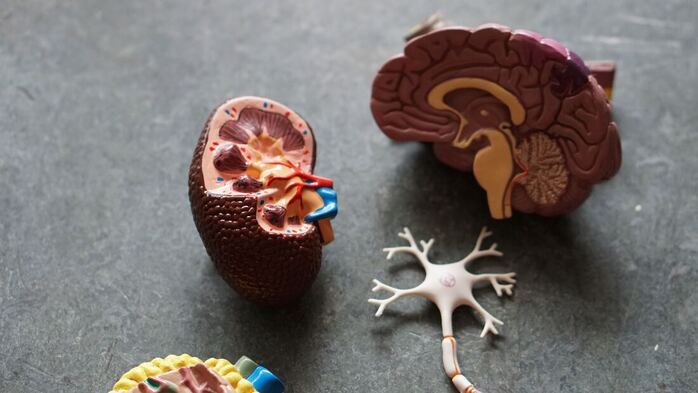Manipulating Genetics in Mice to Explore ADHD Treatments
Attention Deficit Hyperactive Disorder, or ADHD, is one of the most common neurodivergent conditions diagnosed amongst youth in the United States, and the symptoms can continue well into adulthood. Characterized by lapses in attention, restlessness, and impulsivity, ADHD was diagnosed in about 9.8% of American children ages 3-17 in 2019, and in about 4% of American adults ages 18–44.
Individuals with ADHD struggle with time management and organizational skills, which can interfere with their academic performance, social relationships, and mental health. Although correlations between ADHD and alterations in brain structure have been established, it remains largely misunderstood.
Recently, researchers created and studied genetically modified mice in order to observe the cognitive effects of modifying a choline transporter, known as CHT. Choline transporters are proteins in the body that are responsible for carrying and moving a precursor of the neurotransmitter acetylcholine into the nervous system.
Neurotransmitters are important chemical messengers that “communicate” with each
other by sending signals throughout your nervous system to allow for everyday function. Acetylcholine specifically plays an important role in memory, learning, and attention. Former studies have proven that abnormal decreases in acetylcholine can disrupt cognitive function, thus making the molecule a valuable target for ADHD research.
Individuals with ADHD struggle with time management and organizational skills, which can interfere with their academic performance, social relationships, and mental health. Although correlations between ADHD and alterations in brain structure have been established, it remains largely misunderstood.
Recently, researchers created and studied genetically modified mice in order to observe the cognitive effects of modifying a choline transporter, known as CHT. Choline transporters are proteins in the body that are responsible for carrying and moving a precursor of the neurotransmitter acetylcholine into the nervous system.
Neurotransmitters are important chemical messengers that “communicate” with each
other by sending signals throughout your nervous system to allow for everyday function. Acetylcholine specifically plays an important role in memory, learning, and attention. Former studies have proven that abnormal decreases in acetylcholine can disrupt cognitive function, thus making the molecule a valuable target for ADHD research.
Image Source: Robin Weermeijer
Therefore, in laboratory mice, this research team studied the effects of Val89, a mutation that disrupts the choline transporter protein in mice. First, they tested the ability of their choline transporters to move acetylcholine in neurons to various parts of their brain. Since neurotransmitters work due to charge differences in the body, CHT function was determined by a variety of electrochemical techniques. Surgeries were then conducted on the frontal cortex and striatum (areas of the brain responsible for decision-making skills and voluntary motor control) to further measure CHT function. They were able to confirm that the experimental CHT transporters were dysfunctional, thus resembling a hypothetical state of ADHD.
Afterward, scientists then presented the mice with challenging tasks and evaluated their attention performance. Since people with ADHD tend to complete their work based on how much dopamine (the happy hormone) a task would provide, researchers adopted a mice assessment model that was reward-based.
Mice were placed in chambers with a water delivery port, a nose-poke device called a MICARP, and a light panel to serve as a signal for 40-minute sessions. Every time the panel lit up, mice were expected to poke a specific MICARP to receive a water reward. However, if they did not respond within four seconds, or if they poked the wrong MICARP, the mice would be denied water for 20 seconds and forced to undergo correction trials. Mice were expected to trigger 20 rewards for three consecutive sessions each. Later, visual disruptors were introduced to further distract the mice from their goal. The number of misses and correct hits was then analyzed in the data to determine attentional performance.
From the CHT activity obtained by the Val89 data, scientists discovered that mice with one copy of the Val89 mutation had a 77% decline in CHT efficiency, while those with two copies of the mutation experienced an 83% decline in the frontal cortex of the brains. Those groups of mice when faced with physically demanding attentional-based challenges had diminished cognitive performances in comparison to those with functioning choline transporters.
This is valuable and exciting information as CHT Val89 mouse models can be used for further studies on the attention challenges of those with ADHD. Although this experiment is limited to mice, by learning more about genetic and physiological factors that impact one’s concentration, more areas of the human body can serve as potential targets for therapies.
Afterward, scientists then presented the mice with challenging tasks and evaluated their attention performance. Since people with ADHD tend to complete their work based on how much dopamine (the happy hormone) a task would provide, researchers adopted a mice assessment model that was reward-based.
Mice were placed in chambers with a water delivery port, a nose-poke device called a MICARP, and a light panel to serve as a signal for 40-minute sessions. Every time the panel lit up, mice were expected to poke a specific MICARP to receive a water reward. However, if they did not respond within four seconds, or if they poked the wrong MICARP, the mice would be denied water for 20 seconds and forced to undergo correction trials. Mice were expected to trigger 20 rewards for three consecutive sessions each. Later, visual disruptors were introduced to further distract the mice from their goal. The number of misses and correct hits was then analyzed in the data to determine attentional performance.
From the CHT activity obtained by the Val89 data, scientists discovered that mice with one copy of the Val89 mutation had a 77% decline in CHT efficiency, while those with two copies of the mutation experienced an 83% decline in the frontal cortex of the brains. Those groups of mice when faced with physically demanding attentional-based challenges had diminished cognitive performances in comparison to those with functioning choline transporters.
This is valuable and exciting information as CHT Val89 mouse models can be used for further studies on the attention challenges of those with ADHD. Although this experiment is limited to mice, by learning more about genetic and physiological factors that impact one’s concentration, more areas of the human body can serve as potential targets for therapies.
Featured Image Source: Cottonbro Studio
RELATED ARTICLES
|
Vertical Divider
|
Vertical Divider
|
Vertical Divider
|






